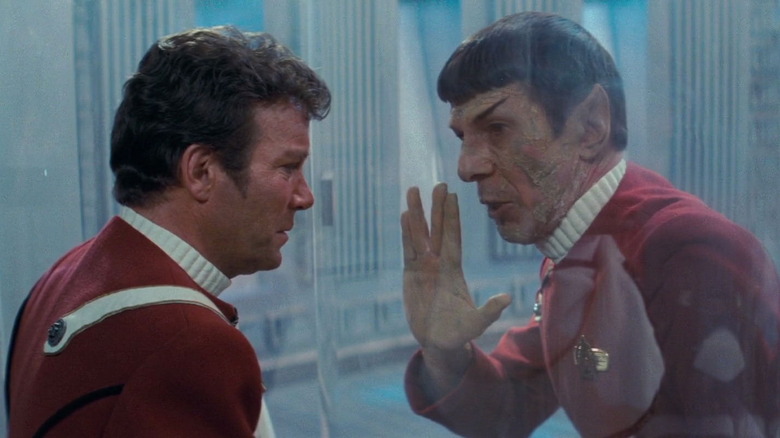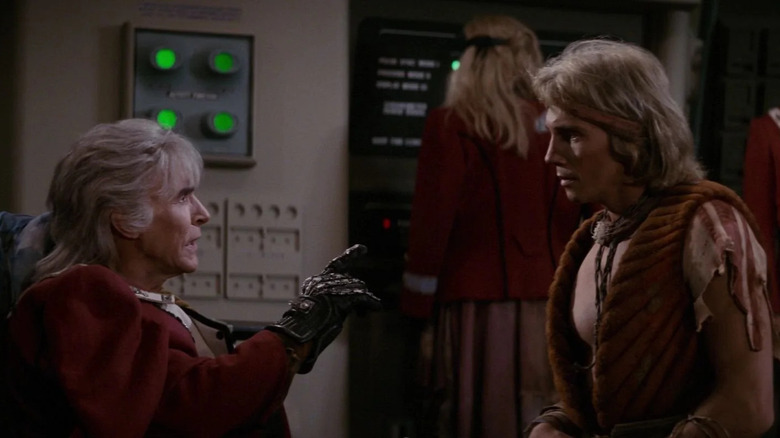“Star Trek II: The Wrath of Khan” has become a huge part of the franchise’s legacy and is considered by many to be the best “Star Trek” movie of them all, but it was a serious challenge to bring to the screen. After the relative failures of “Star Trek: The Motion Picture,” franchise creator Gene Roddenberry was sidelined, allowing for a darker, grittier “Star Trek” than we had ever seen before. “The Wrath of Khan” is an operatic epic, following the crew of the U.S.S. Enterprise under Admiral James T. Kirk (William Shatner) as they contend with genetically engineered villain Khan Noonien Singh (Ricardo Montalbán). Khan was one of the most terrifying antagonists from “Star Trek: The Original Series,” specifically the episode “Space Seed,” so bringing the character back was a big deal. It raised the stakes, as Khan had the capacity to do real damage — stealing terraforming technology called the Genesis Device that would kill an entire world in order to reform it into a lush paradise.
Khan wants revenge on Kirk for forcing him into exile for 15 long years, trapped on a planet that became completely uninhabitable over time. He’s a somewhat sympathetic villain despite his murderous plans because he wants to do right by his people and has endured so much suffering. In the original plans for “The Wrath of Khan,” however, the film made his character even more tragic, including a twist with his infant son.
A tragic twist with Khan’s baby was just too much sadness
In the original “Wrath of Khan” screenplay by Harve Bennett and Jack B. Sowards, which wound up being completely retooled by director Nicholas Meyer, there is a scene early on where U.S.S. Reliant Captain Clark Terrell (Paul Winfield) and Pavel Chekov (Walter Koenig) — who’s serving as the Reliant’s first officer when the film begins — stumble upon an infant during their discovery of the Botany Bay, Khan’s sleeper ship, on the planet Ceti Alpha. The child is supposedly Khan’s son, and he was meant to show up again at the very end of the film, crawling toward the Genesis Device aboard the teleporter pad of the Reliant, right before Khan detonates the device and kills them all. Though Khan claimed that he wanted to create a new future for his people, in the end he was willing to sacrifice his own son to try and get his final revenge on Kirk. It’s honestly a pretty great (if utterly depressing) ending that works well with the themes and ideas Meyer was already working with, but it may’ve also been just too dark alongside Spock (Leonard Nimoy) sacrificing himself to save the Enterprise.
There’s evidence that the scene was filmed, as a photo of Meyer directing the scene with the baby on the telepad appeared in a 1982 issue of “StarBlazer” magazine, but unfortunately not much else has surfaced. Meyer wasn’t exactly a softie and didn’t even shed a tear when filming Spock’s emotional death scene, so the decision to cut the material featuring Khan’s baby probably wasn’t his. Removing the scenes didn’t change the movie too much, though it would have provided another layer of depth to Khan’s character.
Khan was given the short shrift according to Roddenberry
Though it’s unlikely that Roddenberry would have wanted to include the subplot with Khan’s son because it’s way too dark for his optimistic sensibilities, he did think that Montalbán deserved more to work with from the script. He was extremely critical of the film but credited the actor for being its saving grace, taking some of the cornier lines and turning them into something more operatic.
Though not everyone loved “The Wrath of Khan” and some critics absolutely panned it at the time, it’s gone on to become pretty universally beloved. While a lot of that can be chalked up to Meyer’s direction and the high intensity entertainment compared to “Star Trek: The Motion Picture,” Khan is also a pretty spectacular villain. If those scenes with his son had been left in, he might have been something even greater and more complicated, but it’s pretty understandable that the studio didn’t want to completely alienate audiences with such a downer ending.







